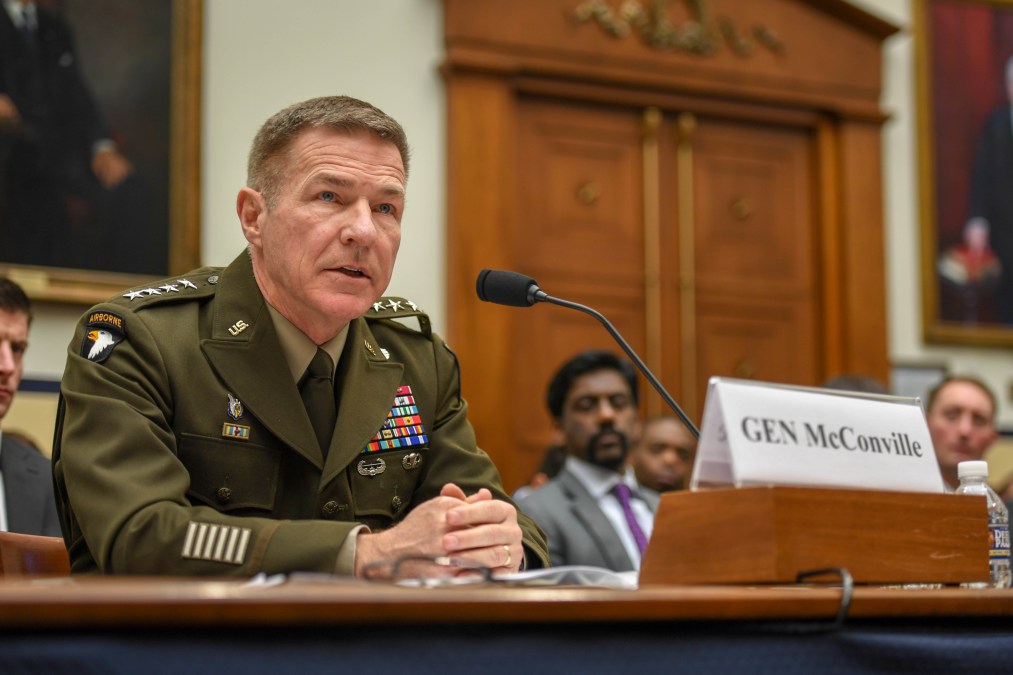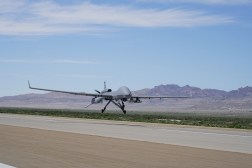Army stands up first multi-domain task force in Washington state

The first of three multi-domain task forces has been established in Washington state to focus on the Army’s combat operations in areas with limited telecommunications access, the service’s top officer said Wednesday.
Military leaders have stressed that battles of the future will rely on a connected internet-like system to communicate across the domains of land, air, sea, cyber and space — a future the new task force and many other offices across the military are working to make real. The task force was activated to bring this conceptual connectivity to life in “Anti Access/Area Denial (A2/AD)” environments, Army Chief of Staff Gen. James McConville said during a Heritage Foundation event.
Two other multi-domain task forces are planned to be stood up in the coming years, one in Europe and another in the Indo-Pacific, McConville added.
“The future is all about range and speed,” the general said, referring to modernization work across the Army to speed up multi-domain operations.
The task force started as a pilot program in 2017, according to an Army news release. As the Army developed other modernization centers across the force, the task force in Washington was activated to be a “centerpiece” of modernization in A2/AD environments, where enemy forces jam communications or launch cyberattacks to disrupt operations.
McConville said Army systems still have the ability to “penetrate” environments degraded by an enemy.
McConville also spoke about the task force’s additional focus on long-range precision “effects,” a capability similar to long-range precision fires where artillery guns can hit targets miles away. McConville didn’t elaborate on what targeting effects the Army is now able to achieve by linking more data across domains, only saying the new capabilities “are coming on board as we speak.”
“All of those capabilities can be used to get precision effects below the level of armed conflict,” he said.






